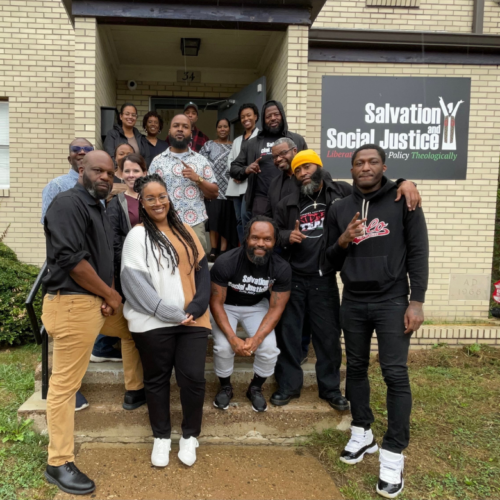
How Are Hispanic Individuals Represented in the Criminal Justice System?
This Hispanic Heritage Month, we are taking a look at what we know—and do not know—about how the criminal justice system impacts Hispanic Americans.
What We Know
Similar to other Black, Indigenous, and People of Color (BIPOC) communities, Hispanic Americans are overrepresented in our nation’s criminal justice system.
Many Hispanic individuals face public misconceptions about the relationship between immigration and crime, specifically among undocumented immigrants. The reality is that research has found Hispanic immigrants commit fewer crimes than native-born Americans, and undocumented immigrants are substantially less likely to be arrested for serious crimes than U.S. citizens.
Despite committing crimes at a lower rate, Hispanic adults overall, including immigrants and native-born American citizens, are incarcerated in prison at a rate that is 2.9 times higher than that of White adults. Between 2010 and 2019, they were 1.6 times more likely to be the victim of a violent hate crime than White people.
The recent rise in gun violence has also acutely impacted this group. Black and Hispanic men were disproportionately affected by the uptick in shooting incidents. Firearm injuries spiked 76 percent for Hispanic communities in 2020, while increasing 40 percent for their White counterparts, compared to 2018 and 2019 baselines.
Furthermore, although Hispanic individuals are less likely to experience police contact than White individuals, the contact they do experience is more likely to be violent, including through threats or uses of force such as handcuffing, physical violence, and pointing or shooting a gun.
So, what does this all mean?
These patterns, along with previous research, suggest that the U.S. criminal justice system treats Hispanic individuals—both citizens and non-citizens—more punitively than it does White individuals. This may not be much of a surprise for most people; high profile events in the past several years have starkly highlighted the disparities between the experiences of White and BIPOC communities within the criminal justice system.
What We Are Missing
Something else we know from previous research is that there are significant gaps in data collection across the country.
Many states do not gather comprehensive information on ethnicity or race in the criminal justice system. Even criminal justice agencies that do collect such data consistently may use categories that fail to capture the diversity of the Hispanic population. For example, some agencies only use the categories of “Black,” “White,” or “Other.” Additionally, in some places, a police officer or prison or jail administrator simply looks at a person and decides what ethnicity or race they are when collecting demographic information. In other places, individuals self-identify their ethnicity and race. Accurate and consistent information on victimization, offending patterns, and populations of Hispanic individuals in prisons and jails is critical for understanding how the criminal justice system impacts these communities.
For our justice system to live up to its ideals, we need adequate data to understand what is happening both in the community and throughout the system. Only then can we can ensure positive outcomes for community members of all backgrounds.
Learn more about our efforts to improve decision-making with criminal justice data through the Justice Counts initiative.
Photo by Envanto Elements and twenty20photos.
In response to growing calls for police reform in New Jersey, particularly following the shootings of Najee Seabrooks…
Read More Three Things to Know About New Jersey’s Groundbreaking Community Response Legislation
Three Things to Know About New Jersey’s Groundbreaking Community Response Legislation
In response to growing calls for police reform in New Jersey, particularly following the shootings of Najee Seabrooks and Andrew Washington in March and August 2023, a coalition of law enforcement officials, mental health professionals, and community advocates partnered to explore public safety response alternatives.
Read More Apply Now: Join a Learning Community for Community and Crisis Response Teams to Improve Responses to Youth
Read More
Apply Now: Join a Learning Community for Community and Crisis Response Teams to Improve Responses to Youth
Read More
 Apply Now: Join a Learning Community Focused on Substance Use and Overdose Community Response Programs
Read More
Apply Now: Join a Learning Community Focused on Substance Use and Overdose Community Response Programs
Read More













